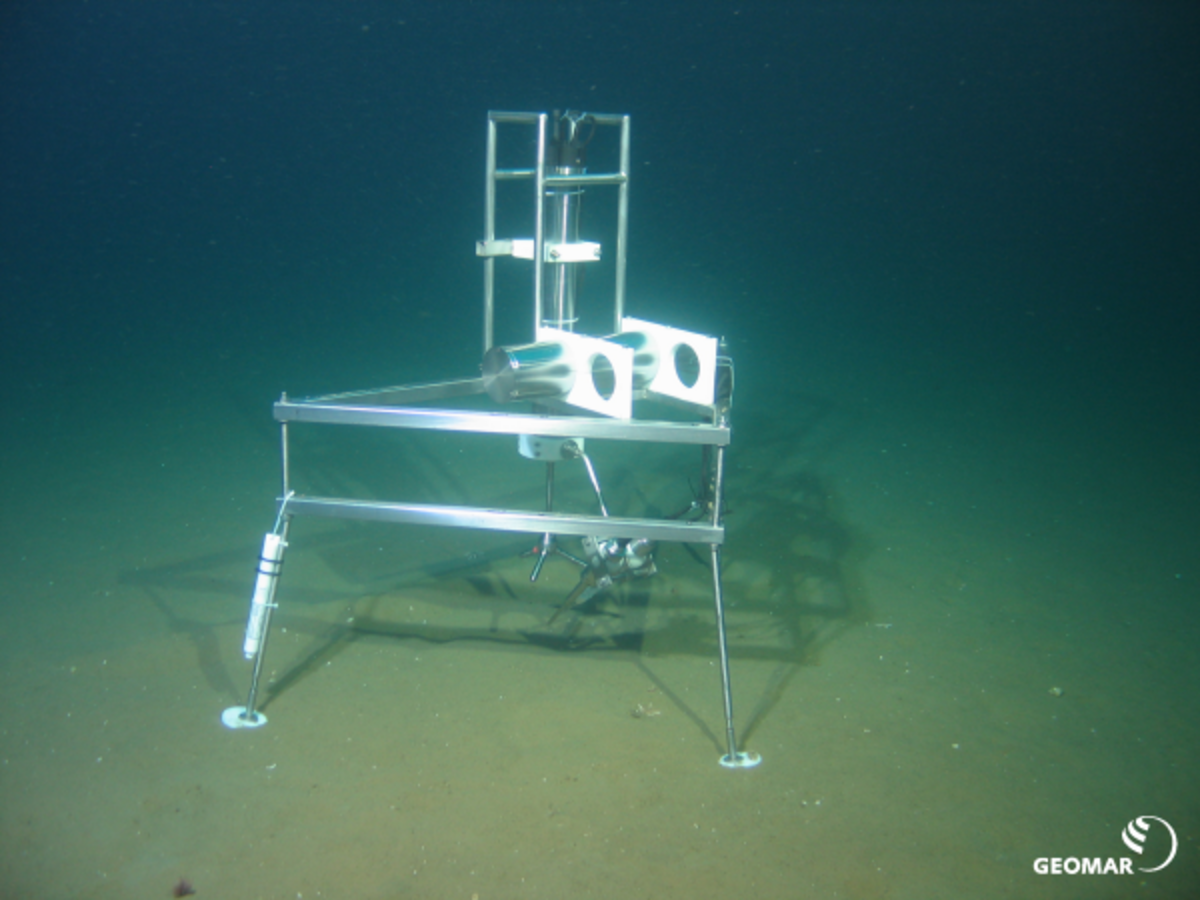The general idea of the eddy correlation technique is that by correlating the vertical velocity fluctuations with the fluctuations of the constituents, the instantaneous exchange flux can be calculated in a straight-forward manner. The advantage of the EC technique over i.e. benthic chambers which exclude the hydrodynamic regime
Using the GEOMAR facilities and technical skills, we have developed the next generation of EC for oxygen measurements. Our system consists of a Nortek ADV coupled with a Clark-type oxygen microsensor. The sensor microamplifiers as well as the ROV deployable light inox steel EC frame were completely designed at GEOMAR.
One of our goals is to extend the existing O2 Eddy Correlation (EC) systems to include heat flux measurements with a fast (7-12 ms response time) FP07 temperature microsensor system (sensor, amplifier and housing). The coupling of benthic heat and O2 flux measurements is expected to help determine if, and to which extent, O2 fluctuations are due to active turbulence or to non-active (fossil) signals. The combined EC system will also help determine temperature dependencies on O2 fluctuation as well as the extraction O2 fluxes. By integrating concurrently measured water column turbulence data, it is then possible to more accurately characterize the transport of dissolved gasses and heat within both the water column and at the sediment-water interface.










